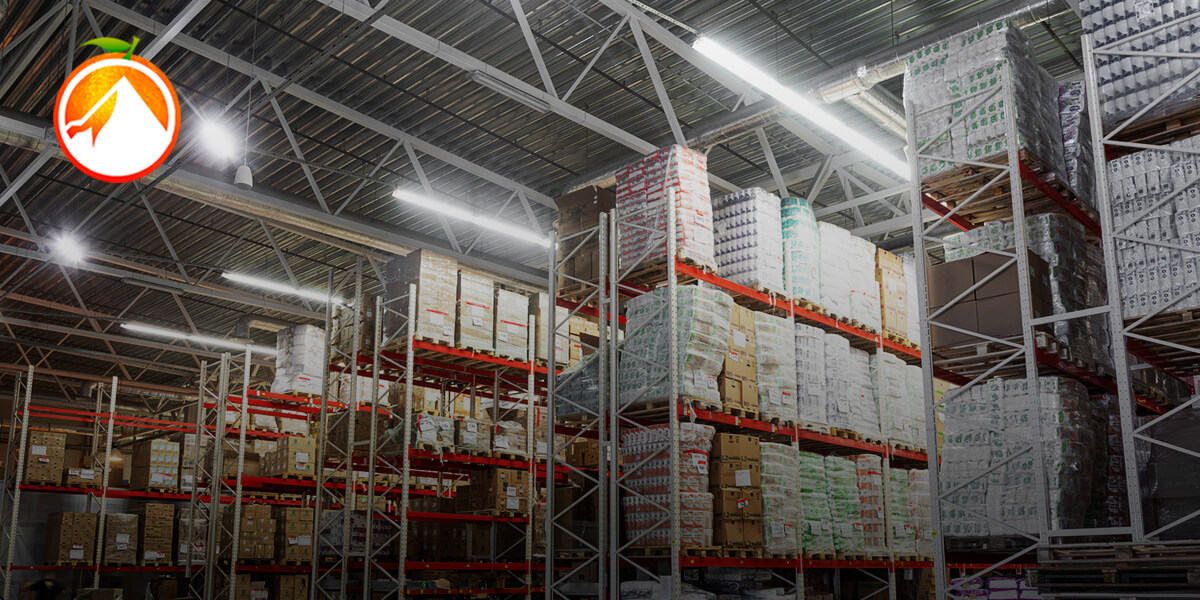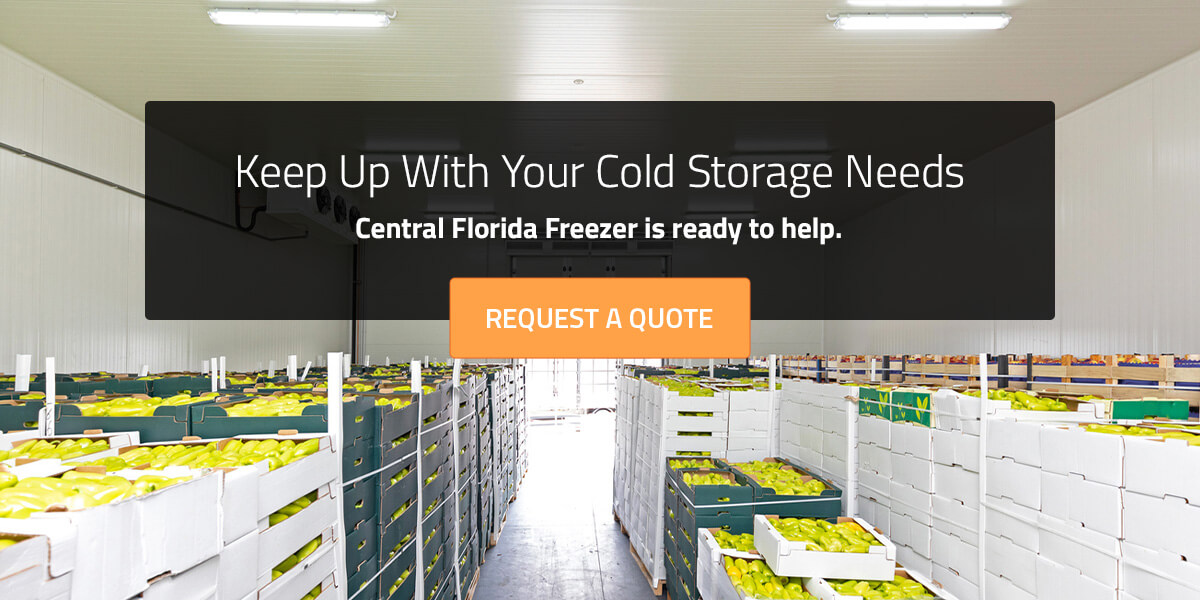Managing Seasonal Demand Fluctuations in Storage

During certain times of the year, many industries see a rise in demand for specific products and services. Certain holiday seasons predictably show a change in buyer behavior, especially with increased demand for consumables. Seasonal inventory can include anything from foodstuffs to holiday decorations, clothing and more.
Using a third-party service provider (3PL) for extra storage during seasonal demands offers cost-effective options, concentration on core business and flexibility.
Understanding the Challenges of Seasonal Warehouse Storage
The process of managing product storage during peak seasons can be a significant challenge. You need to plan strategically to ensure optimal operations and move large stock quantities without overstocking. Proper planning starts with fully understanding the impact this challenge has on business operations and profitability:
- Stockouts: Insufficient storage can lead to stockouts, lost sales and dissatisfied customers.
- Overstocking: Excessive products in storage tie up valuable resources and can lead to perishable goods expiring before there is an opportunity to sell or donate them.
A historical data analysis helps to mitigate these challenges. By examining past sales patterns, companies can anticipate demand surges and allocate the appropriate resources well ahead of time. This approach prevents stockouts and overstocking while helping to forecast demand accurately, allowing for timely adjustments to storage capabilities.

Strategies to Deal With Increased Storage Needs
Strategies for managing increased storage needs require a comprehensive approach. When organizations seamlessly integrate these strategies, there is more capacity to effectively navigate the opportunities seasonal demand brings, leading to optimized business operations and enhanced profitability.
- Demand forecasting and planning: This strategy lays the foundation of storage management. Accurate predictions help anticipate peaks and falls, enabling your business to adjust its storage needs accordingly. This process involves analyzing data from past sales periods, market trends and consumer behavioral patterns to make informed projections.
- Just-in-time inventory management: You can reduce storage costs and optimize resources for this period by minimizing excess inventory and relying on timely restocking. This tactic requires seasonal staff to aid the production schedule but curbs the need for additional storage due to excess inventory.
- Workforce flexibility: During peak seasons, temporary staff offers your organization some scalability to match production needs. As a result, you can maximize workflow, aiding your just-in-time inventory management strategy to boost on-demand production capabilities.
- Data-driven decision-making: Using real-time data analytics provides insights into consumer preferences and market dynamics during various times of the year. You can identify the most in-demand products, quickly matching the production schedule to meet this demand. This strategy also allows for agile adjustments in storage to optimize resource allocation.
Ways to Avoid Overstocking When Storing Seasonally
Overstocking can lead to increased carrying costs, obsolescence and less cash flow. It’s essential to plan inventory using data-driven decision-making and demand forecasting strategies. When you have data on high-demand periods for specific products, note how long these periods last on average, using this data in combination with the strategies mentioned above to plan for the right amount of stock.
- Safety stock management: Organizations can maintain optimal inventory levels by employing active safety stock management, ensuring products are available without excessive surplus. These predictions are based on historical variance, with added numbers to anticipate unexpected demand spikes during the season ahead.
- Dynamic pricing strategies: Adjust prices based on demand and availability to regulate demand in peak times. This strategy incentivizes customers to purchase products even during off-peak seasons, reducing the need for excessive stockpiling. As a result, you can prevent inventory backlogs and overstocking.
- Collaborative supply chain management: Open communication between suppliers, manufacturers and retailers enables better demand forecasting and inventory planning. This real-time exchange of information allows for quicker adjustments to changing demand patterns, minimizing the risk of overstocking.
How to Handle Sales Surges With a 3PL
Outsourcing warehouse storage to a 3PL is a valuable solution to navigate seasonal demand fluctuations effectively. In particular, doing so allows you to access temperature-controlled zones within the storage facilities for cold or ambient storage. This kind of storage prevents spoilage and maintains product integrity during those high-demand periods.
Many 3PLs offer advanced technology, allowing you to access a computerized warehouse management system and online inventory viewing in real-time. Other technology integrations allow for temperature-zone monitoring through sensors. Additional benefits to look forward to when your organization collaborates with a 3PL include:
- Savings: Save time and money by having a dedicated service provider oversee warehousing and the necessary paperwork.
- Scalability and flexibility: A 3PL has the space, transportation and workforce to manage inventory flexibly during high-demand seasons and regular sales periods.
- Better logistics: Look forward to continuous logistics advancements with a partner dedicated to improving their service offerings.
Tips for Managing Seasonal Demand Fluctuations in Storage
A proactive approach to your supply chain planning can help you find seasonal storage solutions for the demand fluctuation that happens due to weather, holidays, income availability or migration patterns depending on the time of the year. About 56% of consumers in the United States start their festive shopping in October — emphasizing the importance of planning.
- Plan properly: Invest in data analysis and seasonal demand forecasting tools to predict demand shifts accurately and hone in on the right timing to start production, increase storage and push pricing to meet demands.
- Categorize inventory: Differentiate your seasonal products from perennial products to avoid an abundance of leftover stock.
- Flexible workforce: Prepare for peak seasons by hiring seasonal workers and providing the appropriate training.
- Collaborative approach: Keep open communication with suppliers and distributors to align production and distribution efforts.
- Agile production: Use a flexible production schedule to quickly adapt to changing demand patterns.
- Offload slow-moving products: Offer discounts on slow-moving products ahead of the peak season to free up warehouse space for seasonal demands and avoid overstocking challenges.

Keep Up With Your Cold Storage Needs
Managing storage during seasonal demand fluctuations requires a multi-faceted approach. Outsourcing your cold storage needs to a trusted supply chain partner can assist you with storage, packaging and transportation.
Central Florida Freezer is ready to help with your storage needs. With a shipment rate of 99.99%, we can meet your warehousing needs even during peak seasons. Learn more about our cost-effective storage options and services. Ready to get started? Request a quote today.

No comments yet.